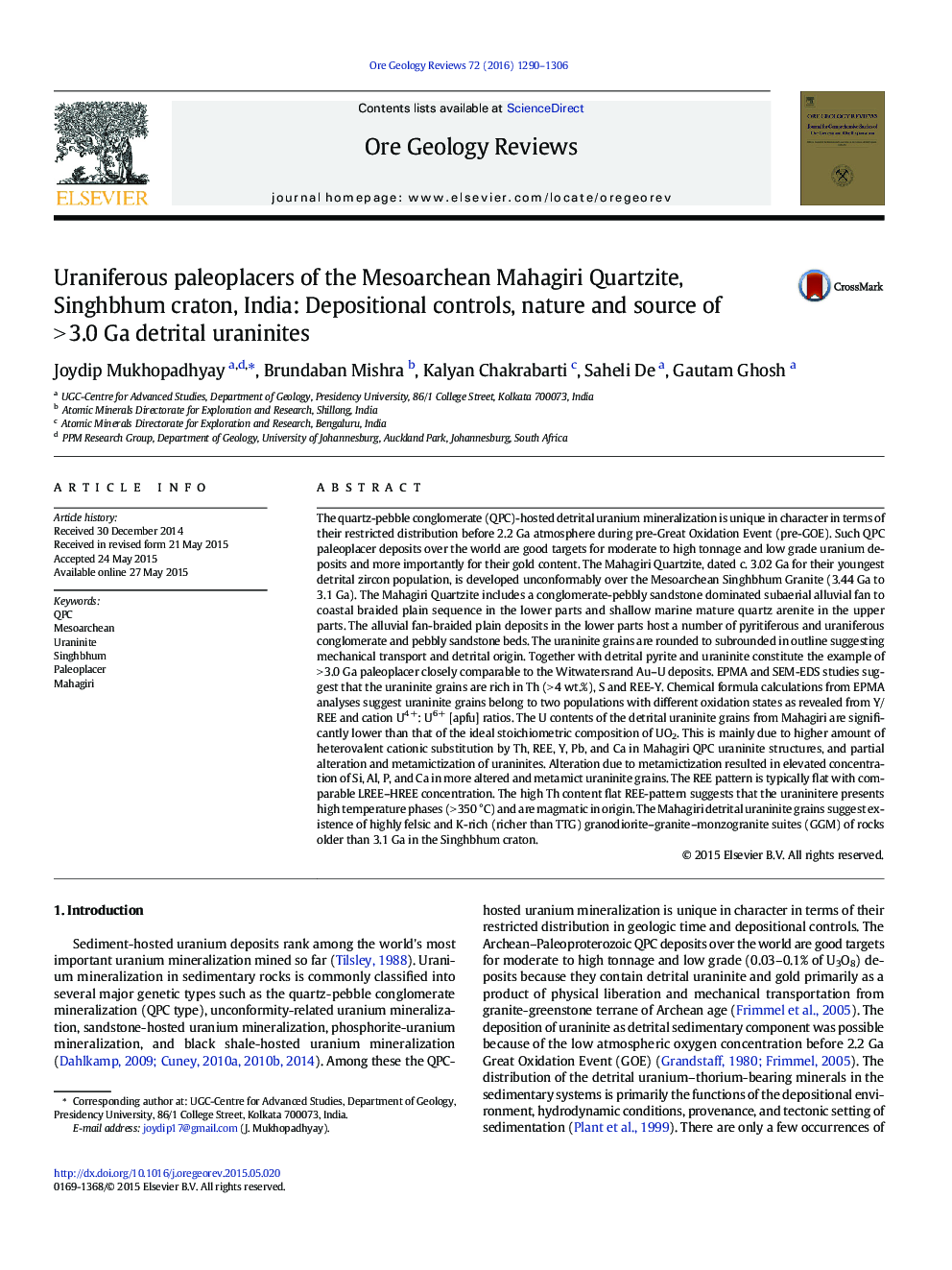| کد مقاله | کد نشریه | سال انتشار | مقاله انگلیسی | نسخه تمام متن |
|---|---|---|---|---|
| 4697239 | 1351867 | 2016 | 17 صفحه PDF | دانلود رایگان |

• Detrital uraninite older than 3.0 Ga suggesting considerable crustal differentiation by Mesoarchean.
• Zoned magmatic uraninite with Th–Y concentration in the core.
• Subaerial fan-coastal braid plain stratabound paleoplacer, implications for low-grade high tonnage deposits in strike continuity.
The quartz-pebble conglomerate (QPC)-hosted detrital uranium mineralization is unique in character in terms of their restricted distribution before 2.2 Ga atmosphere during pre-Great Oxidation Event (pre-GOE). Such QPC paleoplacer deposits over the world are good targets for moderate to high tonnage and low grade uranium deposits and more importantly for their gold content. The Mahagiri Quartzite, dated c. 3.02 Ga for their youngest detrital zircon population, is developed unconformably over the Mesoarchean Singhbhum Granite (3.44 Ga to 3.1 Ga). The Mahagiri Quartzite includes a conglomerate-pebbly sandstone dominated subaerial alluvial fan to coastal braided plain sequence in the lower parts and shallow marine mature quartz arenite in the upper parts. The alluvial fan-braided plain deposits in the lower parts host a number of pyritiferous and uraniferous conglomerate and pebbly sandstone beds. The uraninite grains are rounded to subrounded in outline suggesting mechanical transport and detrital origin. Together with detrital pyrite and uraninite constitute the example of > 3.0 Ga paleoplacer closely comparable to the Witwatersrand Au–U deposits. EPMA and SEM-EDS studies suggest that the uraninite grains are rich in Th (> 4 wt.%), S and REE-Y. Chemical formula calculations from EPMA analyses suggest uraninite grains belong to two populations with different oxidation states as revealed from Y/REE and cation U4 +: U6 + [apfu] ratios. The U contents of the detrital uraninite grains from Mahagiri are significantly lower than that of the ideal stoichiometric composition of UO2. This is mainly due to higher amount of heterovalent cationic substitution by Th, REE, Y, Pb, and Ca in Mahagiri QPC uraninite structures, and partial alteration and metamictization of uraninites. Alteration due to metamictization resulted in elevated concentration of Si, Al, P, and Ca in more altered and metamict uraninite grains. The REE pattern is typically flat with comparable LREE–HREE concentration. The high Th content flat REE-pattern suggests that the uraninitere presents high temperature phases (> 350 °C) and are magmatic in origin. The Mahagiri detrital uraninite grains suggest existence of highly felsic and K-rich (richer than TTG) granodiorite–granite–monzogranite suites (GGM) of rocks older than 3.1 Ga in the Singhbhum craton.
Journal: Ore Geology Reviews - Volume 72, Part 2, January 2016, Pages 1290–1306